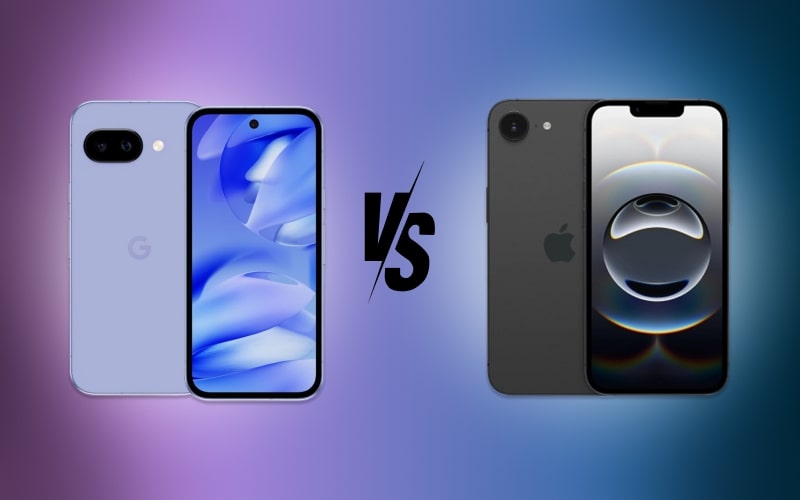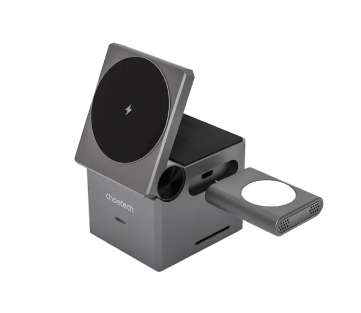In one corner, we have the Google Pixel 9a – Google’s upcoming budget-friendly champ that’s packing some surprising new tricks. And in the other, the Apple iPhone 16e – Apple’s newly unveiled entry-level iPhone that aims to bring flagship-like performance to a more affordable device. Both phones target value-conscious users, but they go about it in different ways.
In this article, we’ll compare Pixel 9a vs iPhone 16e to help you decide which one is the better fit for you. So grab some popcorn, and let’s dive in!
Table of Contents
Pixel 9a vs iPhone 16e: The Verdict
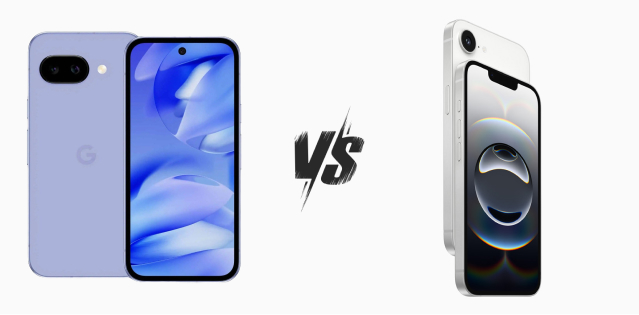
Choosing between the Pixel 9a and iPhone 16e isn’t as simple as picking a “winner” – it really depends on what you care about most in a phone. Here’s the quick verdict for different types of users:
- Photography: Pixel 9a wins with a dual-lens setup (including ultrawide) and Google’s unbeatable computational photography. The iPhone 16e’s single 48MP sensor delivers solid results but lacks versatility. If you shoot landscapes or creative angles, go Pixel. If you want effortless, natural-looking shots of people and pets, the iPhone’s color accuracy is unbeatable.
- Battery Life: Pixel 9a likely lasts longer with a rumored 5,100 mAh battery, the biggest in a Pixel yet. The iPhone 16e’s A18 chip delivers excellent efficiency, lasting around 26 hours, but the Pixel’s sheer battery size should give it an edge for heavy users.
- Performance & Software: iPhone 16e dominates in raw power with the A18 chip, offering lightning-fast speeds and long-term iOS support. Pixel 9a counters with smarter AI features (Call Screen, live transcription) and 7 years of Android updates—making it a strong pick for longevity.
- Display & Design: Pixel 9a has the bigger, smoother screen (6.3” OLED, 120Hz) for fluid scrolling and immersive content. iPhone 16e sticks to a 6.1” OLED at 60Hz, delivering Apple’s signature sharp display but missing the high refresh rate. The iPhone feels more premium with its aluminum-and-glass build, while the Pixel 9a comes in fun colors and a fresh design.
- Price & Value: Pixel 9a is the better deal at $499 vs. the iPhone 16e’s $599. While Apple gives you the A18 chip and brand prestige, it cuts features (no ultrawide camera, no MagSafe). Pixel 9a packs more features for less money—ideal for budget-conscious buyers.
Final Verdict
- Pixel 9a: Best for value, photography flexibility, battery life, and AI tricks. If you want the most tech per dollar, this is it.
- iPhone 16e: Best for performance, premium build, and Apple’s ecosystem. If you’re locked into iOS and want a reliable phone, it’s a solid pick.
It all comes down to what matters most—Android’s AI smarts or Apple’s polished experience!
Pixel 9a vs iPhone 16e: Detailed Comparison
| Feature | Pixel 9a | iPhone 16e |
| Design & Build Quality | Playful personality, sleek, nearly flush dual-camera bar, fun colors. Likely plastic (or hybrid), lightweight, shatter-resistant, IP67. | Premium feel, aluminum frame, glass back, two simple matte colors. Minimalist single-camera design. Durable, IP67 or IP68, Face ID. |
| Display | 6.3-inch OLED with 120Hz refresh rate. | 6.1-inch OLED, crisp, but still stuck at 60Hz. |
| Performance & Software | Google’s Tensor G4, focused on AI smarts, 7 years of Android updates. Not as fast as A18, but built for intelligent features. | A18 chip, powerhouse, smooth performance for years. iOS 19 runs like butter, at least 5 years of updates. |
| Camera System | 48MP main + 13MP ultrawide, flexibility, Night Sight, sharp details, wide-angle shots. Google’s computational photography works magic. | 48MP single lens with 2x digital zoom. Reliable, great for everyday shots, no ultrawide = limited versatility. Video is Apple’s strong suit, 4K60, stabilization. |
| Battery Life & Charging | 5,100 mAh battery (biggest in a Pixel!), all-day+ endurance. 23W wired charging, 7.5W wireless (no MagSafe). | Around 3,000 mAh but highly efficient. Claims 26-hour battery life, USB-C charging, no MagSafe or fast wireless charging. |
| Connectivity & Extras | Wi-Fi 6E/7, 5G, NFC, fingerprint sensor, Call Screening & AI features, Android 15 out of the box. No satellite SOS. | Wi-Fi 6E, 5G, Face ID, Apple ecosystem perks (iMessage, FaceTime, AirPods seamless pairing, etc.), Satellite SOS. |
| Price & Value | $499—cheaper but still feature-packed (better display, dual cameras, bigger battery). | $599—premium build, Apple performance, but lacks an ultrawide camera and 120Hz. |
Design & Build Quality
The Pixel 9a keeps Google’s playful personality with a sleek, nearly flush dual-camera bar and fun colors—Obsidian (black), Porcelain (white), Peony (pink), and Iris (purple). It’s likely plastic (or a plastic-metal hybrid) to keep costs down, making it lightweight and shatter-resistant. Expect IP67 water resistance and either a rear or in-screen fingerprint sensor.
The iPhone 16e sticks to Apple’s premium feel: an aluminum frame, glass back, and just two simple matte colors (black and white). The minimalist single-camera design is a throwback to older iPhones. It’s durable, has IP67 or IP68 water resistance, and features Face ID instead of a fingerprint scanner.
Winner: iPhone 16e feels more premium, but Pixel 9a wins on fun colors and a modern punch-hole display.
Display
A clear win for Pixel 9a here—it boasts a 6.3-inch OLED with a 120Hz refresh rate, making scrolling and gaming smooth. The iPhone 16e’s 6.1-inch OLED is crisp, but still stuck at 60Hz. If you’re used to high refresh rates, Apple’s screen might feel outdated.
Winner: Pixel 9a—bigger, smoother, and better for media.
Performance & Software
- iPhone 16e: The A18 chip makes this a powerhouse, delivering smooth performance for years. iOS 19 runs like butter, and Apple offers at least 5 years of updates.
- Pixel 9a: Powered by Google’s Tensor G4, it’s focused on AI smarts—real-time translation, Call Screening, and 7 years of Android updates. It’s not as fast as the A18, but it’s built for intelligent features rather than just raw speed.
Winner: iPhone 16e for speed, but Pixel 9a for long-term updates & AI tricks.
Camera System
- Pixel 9a: 48MP main + 13MP ultrawide gives you flexibility—Night Sight, sharp details, and wide-angle shots. Google’s computational photography works magic in low light.
- iPhone 16e: 48MP single lens with 2x digital zoom. It’s reliable and great for everyday shots, but no ultrawide = limited versatility. Video is Apple’s strong suit, with 4K60 and excellent stabilization.
Winner: Pixel 9a for photography, iPhone 16e for video.
Battery Life & Charging
- Pixel 9a: 5,100 mAh battery (the biggest in a Pixel!) promises all-day+ endurance. 23W wired charging, 7.5W wireless (no MagSafe).
- iPhone 16e: Around 3,000 mAh but highly efficient. Apple claims 26-hour battery life, and it charges via USB-C, but no MagSafe or fast wireless charging.
Winner: Pixel 9a for endurance, iPhone 16e for efficiency.
Connectivity & Extra Features
- Pixel 9a: Wi-Fi 6E/7, 5G, NFC, fingerprint sensor, Call Screening & AI features, and Android 15 out of the box. No satellite SOS like Apple.
- iPhone 16e: Wi-Fi 6E, 5G, Face ID, Apple ecosystem perks (iMessage, FaceTime, AirPods seamless pairing, etc.), and Satellite SOS—a lifesaver in emergencies.
Winner: Tie—Pixel for more included features, iPhone for emergency & ecosystem perks.
Price & Value
- Pixel 9a: $499—cheaper but still feature-packed (better display, dual cameras, bigger battery).
- iPhone 16e: $599—premium build, Apple performance, but lacks an ultrawide camera and 120Hz.
Winner: Pixel 9a for value. The iPhone 16e is great if you’re locked into iOS, but for pure specs-to-price, Pixel is the smarter buy.
Other Considerations
- Software Experience: Android vs iOS—the age-old battle. Pixel 9a runs clean, customizable stock Android with AI perks like Magic Eraser and Call Screening. iPhone 16e delivers the polished iOS experience, seamless iMessage/FaceTime, and top-tier app support. Sticking with what you know might be the easiest choice.
- Security: iPhone 16e has Face ID, Pixel 9a likely has a fingerprint sensor. Both offer encrypted storage & secure payments, so it’s a tie for everyday security.
- Ecosystem & Compatibility: Own a Mac, iPad, or Apple Watch? The iPhone 16e integrates flawlessly with Apple devices. Google services work on both, but Pixel 9a offers better perks for Google users, like full-quality Google Photos backups.
- Support & Repairs: Apple wins with its vast retail network & customer support. Google is improving, but fewer physical locations mean Pixel repairs might be trickier.
- Cool Factor: iPhone still holds that “status” appeal, while Pixel is for the tech-savvy crowd who value smart features over hype. Both are cool—just in different ways!
Top Accessories for Pixel 9a and iPhone 16e
No smartphone experience is complete without some awesome accessories to level up your game. Whether you pick the Pixel 9a or the iPhone 16e, here are some top accessories you might consider – starting with a truly futuristic one:
Titan eSIM-Connected Earbuds
These futuristic earbuds come with built-in eSIM, meaning you can take calls or stream music without your phone.
Perfect for workouts or busy days when carrying a phone isn’t ideal. Plus, they offer great sound and long battery life, working seamlessly with both iOS and Android.
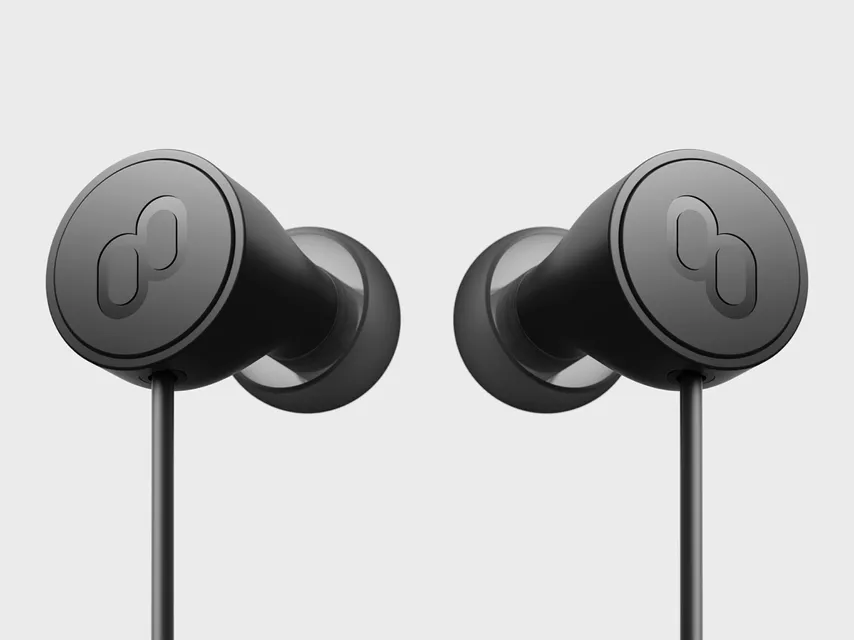
Protective Case (Clear or Rugged)
Show off the Pixel’s vibrant colors or iPhone’s sleek design with a clear case, or opt for a rugged one (OtterBox, Spigen, etc.) for drop protection. Since iPhone 16e lacks MagSafe, a standard case will do, while Pixel users can grab Google’s official fabric or silicone cases.
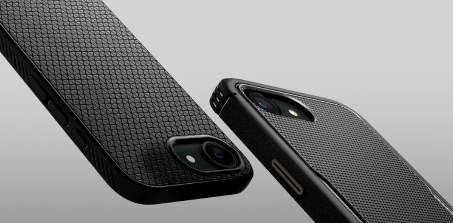
Bluetooth Tracker (AirTag or Tile)
Always losing things? AirTag for iPhone 16e (though no UWB for precise tracking) or a Tile/Chipolo for Pixel helps locate keys, wallets, or bags via Bluetooth and crowdsourced tracking.
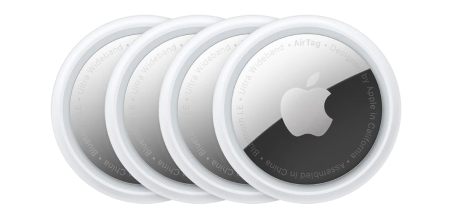
Conclusion
Both the Pixel 9a and iPhone 16e prove you don’t need to drop a fortune to get a killer smartphone—but they take wildly different approaches.
Pixel 9a is the bold value king—big 120Hz display, versatile cameras, a massive battery, and AI smarts, all at a lower price. If you love getting the most tech per dollar, enjoy Android’s freedom, and want a phone with personality, this one’s got your name on it.
iPhone 16e is the refined everyday champ—blazing-fast A18 chip, fantastic battery life, and that smooth iOS experience. It’s for those who love Apple’s ecosystem and just want a phone that works flawlessly without the Pro-level price tag.
Bottom line? If you want the best deal and flexibility, go Pixel. If you crave performance, simplicity, and iPhone synergy, go Apple. Either way, you’re getting a great phone that’ll last for years.
Pro tip: No matter which one you pick, level it up with some cool accessories (definitely check out those Titan eSIM earbuds!) and make it yours.
Yours truly,
S, XOXO

